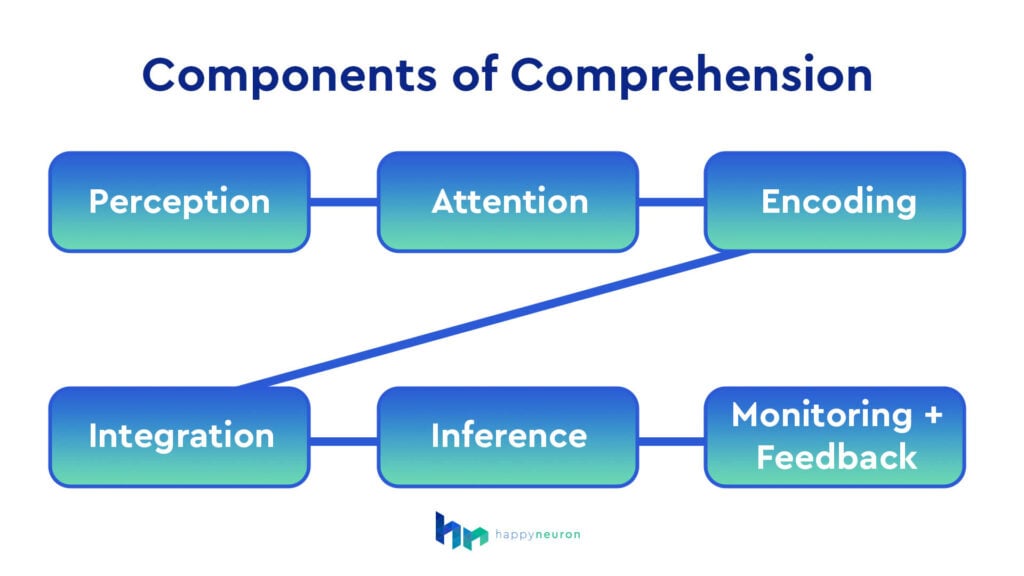
In the landscape of cognition, comprehension is a cornerstone, shaping our ability to understand, interpret, and interact with the world around us. From reading a novel to solving difficult math equations, comprehension is the cognitive process that allows us to make sense of information and derive meaning from it. But what exactly is it, and how does this cognitive function operate in our minds? Let’s explore:
It can be defined as the mental process of extracting meaning from information. It involves integrating new information with existing knowledge and making connections to form a coherent understanding of the subject matter. This process is not limited to language but encompasses various topics such as mathematics, reading, music, and social interactions.
1. Perception: Comprehension often begins with perception, where sensory information is received and processed by the brain. Whether it’s visual, auditory, or tactile stimuli, our senses serve as the entry point for information to enter our cognitive processes.
2. Attention: Attention plays a crucial role in comprehension by selectively focusing on relevant information while filtering out distractions. It directs cognitive resources toward the task at hand, allowing for deeper processing of the material.
3. Encoding: Once attention is directed, the information undergoes encoding, where it is transformed into a format that can be stored and manipulated by the brain. This process involves converting sensory input into meaningful representations that can be accessed later.
4. Integration: Comprehension involves integrating new information with existing knowledge frameworks stored in long-term memory. This integration process allows for the formation of connections and associations, facilitating a deeper understanding of the material.
5. Inference: In many cases, comprehension requires making inferences or drawing conclusions based on available information. This involves filling in gaps and making predictions, often extrapolating beyond the information provided.
6. Monitoring and Feedback: Throughout the comprehension process, individuals monitor their understanding and adjust cognitive strategies accordingly. Feedback from the environment or internal cues helps in refining comprehension and resolving any discrepancies or misunderstandings.
Language serves as a fundamental medium for comprehension, allowing us to communicate, express ideas, and convey meaning. Whether spoken or written, language comprehension involves decoding linguistic symbols, deciphering syntax and semantics, and constructing mental representations of the communicated message.
This is a complex cognitive skill that involves decoding written text, extracting meaning, and constructing a mental model of the text’s content. Effective reading comprehension encompasses various strategies, including predicting, summarizing, questioning, and synthesizing information.

Several factors can influence comprehension, including individual differences in cognitive abilities, prior knowledge, motivation, and context. Additionally, the complexity and ambiguity of the material, as well as the clarity of communication, can impact comprehension outcomes.
If an individual is experiencing a permanent or temporary cognitive deficit, they may have trouble with comprehension. This can be due to a variety of domains being affected. For example, if their cognitive condition causes an issue with attention, processing speed, or memory, they may also experience issues with comprehension.
Depending on the individual’s condition, some cognitive deficits may be improved with cognitive exercise. By working on the affected domains with a therapist, they may be able to improve their comprehension and other cognitive skills.
For individuals who are struggling with comprehension skills, cognitive exercises are a great way to work on them. Whether your client has experienced a brain injury, has a learning disability, or is simply a student looking to hone their skills, HappyNeuron’s comprehension exercises may help.
We recommend these exercises:
Comprehension is an important piece of the puzzle of cognition, enabling us to navigate and make sense of the world around us. From deciphering language to understanding complex concepts, the process of comprehension involves an interplay of perception, attention, encoding, integration, inference, and monitoring. By unraveling the mechanisms underlying comprehension, we gain deeper insights into the workings of the brain and its remarkable capacity to understand and interpret information.
Pulling from our decades of experience in Cognitive Therapeutics, we aim to help you enrich your practice through the use of digital and paper tools.
Pricing + Offers


© 2023 HappyNeuron is a Product of Humans Matter